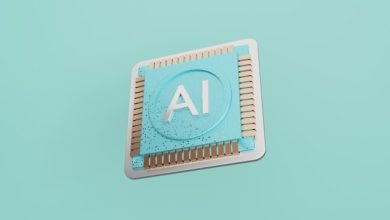
The options trading landscape is undergoing a profound transformation, driven by the rapid advancement of artificial intelligence (AI). From volatility prediction to trade automation, AI technologies are reshaping how traders analyze markets, manage risk, and execute strategies. As algorithms become increasingly sophisticated, they are unlocking new levels of efficiency and accuracy.
The Evolving Landscape of Options Trading and Technological Impact
The options market has always been a complex ecosystem, characterized by high volatility, non-linear risk profiles, and intense time sensitivity. Traditional approaches to options trading relied heavily on standardized pricing models like Black-Scholes, technical analysis, and manual interpretation of market signals. These methods often struggle to keep pace with the volume and speed of modern financial markets.
The rise of zero-day-to-expiration (0DTE) options trading exemplifies this technological revolution. At the CBOE, 0DTE options now constitute approximately 43% of all S&P 500 index options volume. AI algorithms excel at pricing these short-duration instruments, which require rapid monitoring and adjustment to gamma exposure risks.
Tools for options flow tracking and AI-powered signals are widely used in the industry. They provide traders visibility into market maker positioning and large institutional trades. These systems process Options Clearing Corporation (OCC) data in real-time to identify unusual activity that may precede significant price movements.
The Role of AI in Data Analysis, Volatility Prediction, and Pricing Models
AI’s transformative impact stems from its ability to process vast datasets, identify complex patterns, and generate predictive insights with remarkable speed. This is particularly valuable in volatility forecasting and pricing model optimization, two critical components of options trading.
Advanced Volatility Prediction
Volatility represents the lifeblood of options pricing, yet traditional models often fail to capture its dynamic nature. AI-driven approaches, particularly those leveraging recurrent neural networks and long short-term memory (LSTM) architectures, have demonstrated significant improvements in predicting volatility shifts.
Researchers at Chicago Booth developed neural networks that simulate and forecast volatility more accurately than traditional GARCH models. By analyzing historical volatility patterns alongside real-time market data, these systems can anticipate fluctuations that deviate from theoretical norms.
Next-Generation Pricing Models
While Black-Scholes remains foundational, AI-enhanced models now incorporate non-linear variables and behavioral insights into pricing frameworks. A study published in the Journal of Financial Economics demonstrated how deep learning models could account for investor sentiment and herd behavior in options pricing.
These AI-powered models have proven particularly effective during market stress events. During the March 2020 volatility spike, AI systems incorporating volatility clustering and jump diffusion processes outperformed traditional models by more accurately pricing deep out-of-the-money options, which experienced unprecedented demand for portfolio protection.
Implied Volatility Surface Modeling
AI excels at constructing and analyzing implied volatility surfaces across multiple dimensions. Systems deployed by major market makers use neural networks to interpolate volatility surfaces between available strike prices and expirations. This enables more accurate pricing of illiquid options and better detection of relative value opportunities across the volatility surface.
Applications of AI in Trading Strategies, Sentiment Analysis, and Automation
AI’s practical applications are revolutionizing how traders develop strategies, interpret market sentiment, and automate execution in the U.S. options market.
Sentiment Analysis and Market Intelligence
AI systems now parse vast amounts of unstructured data, such as earnings call transcripts, SEC filings, news articles, and social media content, to gauge market sentiment. AI-powered sentiment analysis tools monitor shifts in market mood that often precede significant options activity. By parsing unstructured data from earnings calls, filings, news articles, and social media, these tools help traders anticipate market trends.
The put-call ratio (PCR), a traditional sentiment indicator, has been enhanced through AI correlation analysis. Systems can now identify when extreme PCR readings coincide with changes in volatility regimes, providing more reliable contrarian signals. This proved valuable during the January 2021 meme stock phenomenon, where AI systems detected anomalous sentiment patterns before traditional indicators.
Automated Strategy Execution
AI-powered trading systems can execute complex multi-leg strategies with precision impossible for human traders, especially when integrated with a sophisticated options trading platform that supports real-time analytics and automated execution. These systems monitor real-time gamma exposure, volatility skew changes, and correlation dynamics across underlying assets.
Quantitative funds, such as Renaissance Technologies, employ AI systems that automatically adjust iron condors and calendar spreads in response to changing market conditions. These systems can rebalance positions hundreds of times daily, optimizing for changing volatility regimes and minimizing theta decay impacts.
Pattern Recognition and Anomaly Detection
AI’s pattern recognition capabilities prove invaluable in detecting unusual options activity. Systems monitoring CBOE data can identify subtle changes in order flow that often precede major moves. For instance, AI detection of unusual put buying in regional bank options preceded the March 2023 banking crisis, providing early warning signals to attentive traders.
Benefits for Traders: Efficiency, Accuracy, and Risk Management
The integration of AI into options trading delivers tangible benefits across three key dimensions: efficiency, accuracy, and risk management.
Unprecedented Efficiency Gains
AI automates labor-intensive tasks, from data collection and strategy backtesting to portfolio rebalancing. Advanced backtesting platforms allow traders to evaluate thousands of strategy variations across decades of historical data in minutes, a process that previously required weeks of manual analysis.
This efficiency extends to trade execution. AI systems can simultaneously monitor hundreds of option series, executing trades across multiple legs while ensuring best execution and minimizing market impact.
Enhanced Predictive Accuracy
Machine learning models continuously refine their predictions based on new data, adapting to changing market conditions more effectively than static models. A study by the Options Industry Council found that AI-enhanced pricing models reduced pricing errors by approximately 32% compared to traditional models during periods of high volatility.
This improved accuracy particularly benefits market makers, who must quote tight spreads across thousands of options series. AI systems help maintain tighter spreads while better managing the risks associated with warehouse positions.
Sophisticated Risk Management
AI enhances risk management through real-time exposure monitoring and early warning systems. AI tools are used to reconstruct volatility surfaces and generate alerts when portfolio risks exceed predetermined thresholds.
During the February 2018 volatility explosion, AI systems provided early warnings of gamma exposure imbalances that contributed to the subsequent market turmoil. Funds using these systems were able to reduce positions before the most severe losses occurred.
Risks and Challenges: Overfitting, Data Bias, and Regulatory Concerns
Despite its promise, AI-driven options trading faces significant challenges including technical limitations, data quality issues, and regulatory uncertainty.
Overfitting and Model Risk
Complex neural networks with numerous parameters are prone to overfitting to historical data. A notable example occurred in 2020 when several AI trading strategies that performed excellently in backtests failed during actual market conditions because they had learned patterns specific to the long bull market rather than robust market dynamics.
The SEC has issued guidance emphasizing the importance of robust out-of-sample testing and stress testing AI models across various market regimes. Firms must demonstrate that their AI systems can adapt to structural breaks and unprecedented market conditions.
Data Quality and Bias Issues
AI system effectiveness depends heavily on data quality. The consolidation of market data providers has raised concerns about data diversity and potential biases. During the COVID-19 pandemic, many AI systems struggled because they lacked sufficient examples of pandemic-era market behavior in their training data.
There are also concerns about data snooping bias, where multiple firms developing strategies on similar datasets may converge on similar approaches, potentially amplifying market moves when strategies unwind simultaneously.
Regulatory and Ethical Challenges
The rapid adoption of AI in trading has outpaced regulatory frameworks. SEC Chair Gary Gensler has repeatedly expressed concerns about the potential for AI systems to create “herding” effects where multiple algorithms respond similarly to market signals, potentially amplifying volatility.
There are also transparency challenges. The “black box” nature of some AI models makes it difficult to explain trading decisions to regulators, particularly in cases of unusual market activity or suspected manipulation.
Regulators are particularly concerned about AI systems that might learn to engage in manipulative practices like quote stuffing or spoofing through reinforcement learning without explicit programming to do so.
The Future of Options Trading: Balancing AI and Human Oversight
The future of options trading will likely feature a collaborative partnership between AI capabilities and human expertise, with each complementing the other’s strengths and limitations.
Hybrid Intelligence Systems
Leading firms are developing hybrid intelligence approaches where AI handles data processing and pattern recognition while humans provide strategic oversight and contextual understanding. Goldman Sachs’ options trading desk, for example, uses AI for real-time pricing and risk management but maintains human oversight for unusual market conditions and complex structured transactions.
These systems leverage AI’s computational power while preserving human judgment for situations requiring ethical considerations or understanding of broader market context beyond pure data patterns.
Explainable AI and Regulatory Compliance
The development of explainable AI (XAI) techniques addresses regulatory concerns about transparency. New methods including LIME (Local Interpretable Model-agnostic Explanations) and SHAP (Shapley Additive exPlanations), help make AI decisions interpretable to human traders and regulators.
Major exchanges, including CBOE, are developing standards for AI transparency in trading systems. These standards will likely require firms to maintain audit trails of AI decisions and demonstrate understanding of how their systems reach trading conclusions.
Evolving Regulatory Framework
Regulators are developing new frameworks specifically addressing AI in trading. The SEC’s proposed Rule 15lh-1 would require additional reporting for AI-driven trading strategies, particularly those that might contribute to market volatility.
There is also growing discussion about algorithmic accountability requirements, potentially mandating periodic reviews of AI systems by independent auditors to ensure they operate as intended and don’t develop unexpected behaviors.
AI Literacy and Education
As AI becomes increasingly integral to options trading, there is growing emphasis on AI literacy for traders and portfolio managers. The Options Industry Council has introduced educational programs focusing on AI applications in options trading, helping market participants understand both the capabilities and limitations of these technologies.
Carnegie Mellon, MIT, and other top universities now provide programs that blend financial engineering with machine learning, training quants to develop advanced and ethically guided AI trading solutions.
Conclusion
By transforming options market dynamics, AI delivers unprecedented capabilities in data analysis, volatility forecasting, and strategy automation. While traders and institutions in US markets are benefiting from improved efficiency, accuracy, and risk management, these advances also bring risks such as overfitting, data bias, and regulatory challenges.
The future will likely see continued evolution toward hybrid systems that leverage AI’s computational strengths while maintaining human oversight for strategic direction and ethical guardrails. As this transformation unfolds, success in options trading will increasingly depend on understanding both financial markets and artificial intelligence.
Regulatory frameworks will continue to evolve to address the unique challenges posed by AI trading systems, potentially including new requirements for transparency, testing, and accountability. Firms that proactively address these concerns while leveraging AI’s capabilities will be best positioned to succeed in the increasingly AI-driven landscape of options trading.





